How to Future-Proof Your Business Model
If you want to build a company that’s going to be around in 10 years, you can’t piss off your first customers.
Founders have to find a balance between two different pressures. They need to quickly acquire early customers and get them excited about the product. But they also need to keep those people around even as they adjust their pricing, evolve their product, and change their business model.
The trick is to nail down the things that are going to draw people in at the beginning and make them want to stick around 10 years later. Amazon’s Jeff Bezos puts it like this:
“It’s impossible to imagine a future 10 years from now where a customer comes up and says, ‘Jeff I love Amazon; I just wish the prices were a little higher,’ [or] ‘I love Amazon; I just wish you’d deliver a little more slowly.’ Impossible.”
The mentality companies need to have to win over customers and keep them engaged long-term can be summed up in one sentence: Don’t lose touch with why people love you.
In the eyes of your customers
Over time, your product, market, and channels for acquisition may evolve rapidly. There’s one big thing you have to do to future-proof your business model:
Know why your customers love you, and stay true to that.
When you’re growing a business, you will inevitably do things that your customers don’t like—and those things might be necessary. But it’s challenging to know what changes are going to be net-positive. If you go too far, you risk alienating your core user base, damaging your brand, and failing to maximize on long-term opportunities.
The right kind of changes follow a guiding principle. The wrong kind of changes are impulsive and short-sighted.
Identifying the right kind of changes can be daunting if you don’t have a heuristic—a method that allows each founder to figure out for themselves what kind of changes are good for their specific company.
That’s why you should constantly turn back to why your customers love you and use that to draw your line in the sand. Make changes to the rest of your business, but make sure the value in your customers’ eyes is unwavering in direction and growing in scale.
This helps you and your customers weather necessary changes. Maybe you have to cut your free plan as you edge towards profitability, maybe you have to introduce a new product, and maybe you have to move upmarket. These can all be unpopular decisions. But if you make changes while staying true to why customers love you, you will continue to incentivize retention. In other words, you’re able to expand your business with new opportunities and retain your core user base.
Maintaining that core value while evolving is a challenge that most founders face. Figuring out where to draw the line is hard. But ultimately, to future-proof your business model, you have to align it with the primary ways you provide value to your customers.
There are specific ways you can continue to provide and build upon value when you make big changes to your business:
- Don’t use price as a proxy for value when changing your pricing
- Align product development to user segments when building out new product
- Augment SMB-backed value with enterprise accommodations when moving upmarket
Let’s talk about how to navigate each of these changes without sacrificing your customer base.
Don’t use price as a proxy for value
One of the easiest and most frequent ways companies piss their customers off is by changing pricing.
It’s not inherently bad to change your prices. Iterating on pricing is actually one of the best ways to figure out how much value you’re delivering to people. But you’ll piss off customers if you use pricing changes to further short-term revenue goals, instead of using them to better align a product’s price with its value.
For example, pricing increases should be aligned with increases in value. If you add a new price point in between a starter plan and a professional plan, the mid-priced plan shouldn’t just be a juiced-up version of your startup plan. Instead, it should offer startup users a better way to accomplish their goals with your product to justify the higher price—for example, more seats, more storage, or more service.
You have to be careful. Raising prices without adding value has the potential to confuse and alienate loyal customers. But if you lower prices in a race-to-the-bottom, you’ll create an expectation for low prices instead of an appreciation for the product’s value.
You can’t win by competing on price. But if you stay true to what your customers love about you, you won’t have to.
ClassPass lost loyalists by moving away from their value
Some companies don’t commit to maintaining what customers love when they go through pricing changes. This does the opposite of what a good business should do: it discourages retention.
One company that has struggled with this is ClassPass. When ClassPass first launched in 2013 (formerly called Classtivity), their value proposition was straightforward:
“Easily try a variety of fitness classes at boutique fitness studios in your city.”
The first iteration of their pricing, in the form of a $49/month membership, was billed as a “discovery pass” to help users find and quickly sign up for these local studios.
 From an early version of the ClassPass website.
From an early version of the ClassPass website.
The idea was that ClassPass would make it easy for your to find out about and participate in fitness classes that would have been previously hard to find or hard to sign up for.
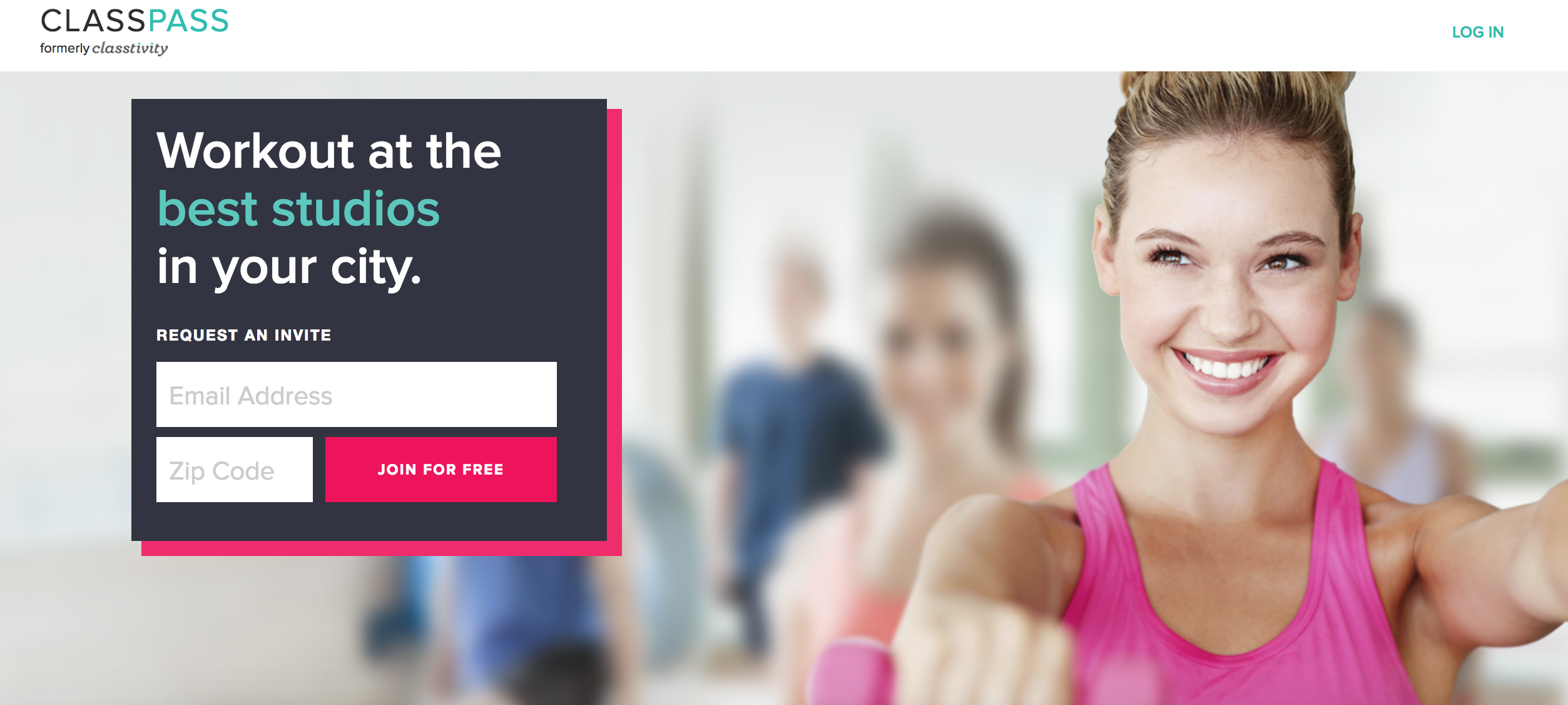 From an early version of the ClassPass website.
From an early version of the ClassPass website.
In 2014, ClassPass introduced a new pricing tier: $99/month for unlimited classes, many of which would normally cost upwards of $30 each. This changed the message that ClassPass sent to users: it said that ClassPass’s value was in providing cheap fitness classes, rather than in the flexibility of signup and selection of classes that they originally promoted.
When the unlimited plan became financially unsustainable for the company, ClassPass had to cut it. But after using low price as a growth lever and creating that expectation in their customers, customers were confused and angry.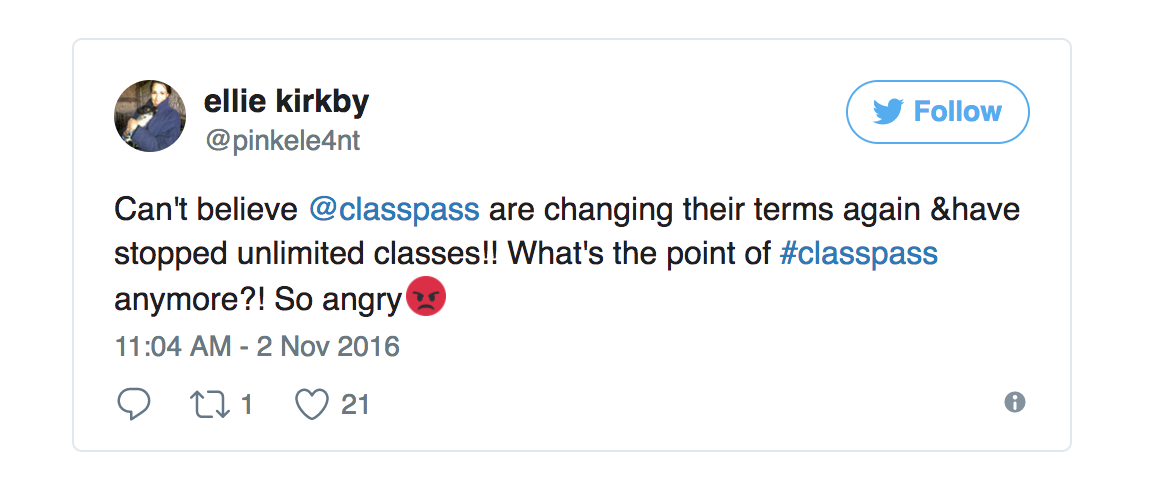
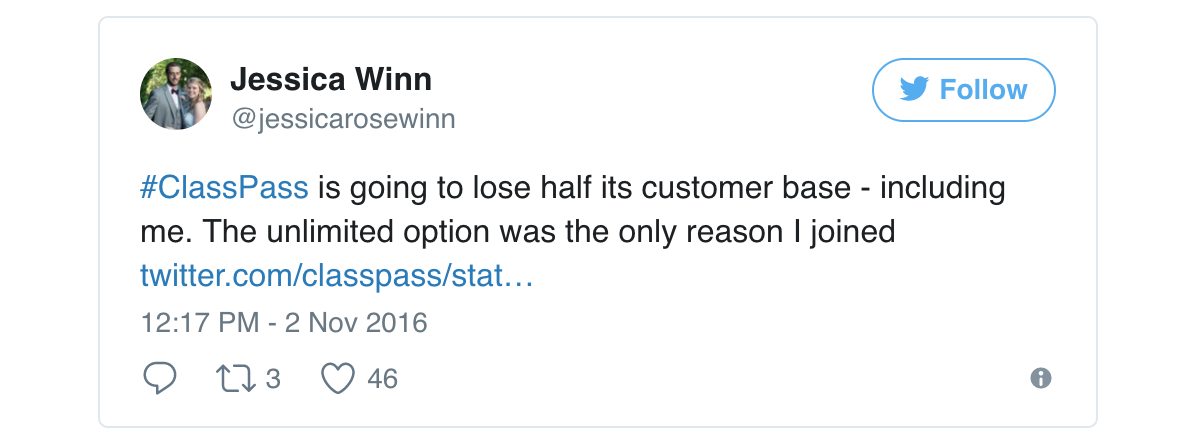
ClassPass had lost touch with the original reason why the service was valuable to users and replaced it with an unsustainable offer of lower prices. When the company had to make pricing changes to evolve and grow the business, they suffered huge losses in their customer base.
Here’s what ClassPass could have done to stay true to the value that hooked initial customers to make them stay:
- They could have started with prices that are high enough so that the profit and loss projections made sense. This might have meant slower initial acquisition, but the company would have acquired the type of customer that is willing to pay for the service at a price that made sense for the business.
- When it came time to make changes to pricing, they could have communicated the reasoning behind these changes with a longer lead in time. These communications should have been extra transparent and should have clearly stated how the core value was staying the same or improving.
- If ClassPass had wanted to experiment with a different pricing structure, they could have said upfront that it was an experiment and solicited feedback. This would have involved explaining the rationale of the experiment, the parameters, and the time limit—and explaining how it would bolster the value that customers would get in the long run.
Competing on price is unsustainable—so don’t use price as a proxy for value. Make sure your pricing changes don’t change the product’s value for customers.
Align product development to user segments
Even as you take on new customers, build new products around the reasons your first loyal group of users loved you.
Early on, you build around what your core audience values. If you’re intent on keeping these core users, new products should also build on what these users love to reward their loyalty and incentivize retention. When you build out new features and products, ask yourself if your original audience would use the product—if it offers cohesive or added value.
When building new products, deliberately decide whether you’re building for your original audience or for a new audience. Whichever you choose, make sure product iterations or feature additions deliver on why your chosen segment loves you.
HubSpot changed a new product to better align with core users
The value in your customer’s eyes can be a useful benchmark when making decisions about new products. HubSpot found this when they were creating and positioning their sales product, Sidekick.
HubSpot introduced its initial SaaS marketing product in 2005 with this promise: Provide a single place for all of a small business’s marketing needs.
In the eyes of their customers, HubSpot’s marketing product provided a solution for companies that didn’t need the complexity of an enterprise solution, but were willing to pay for an inbound sales tool.
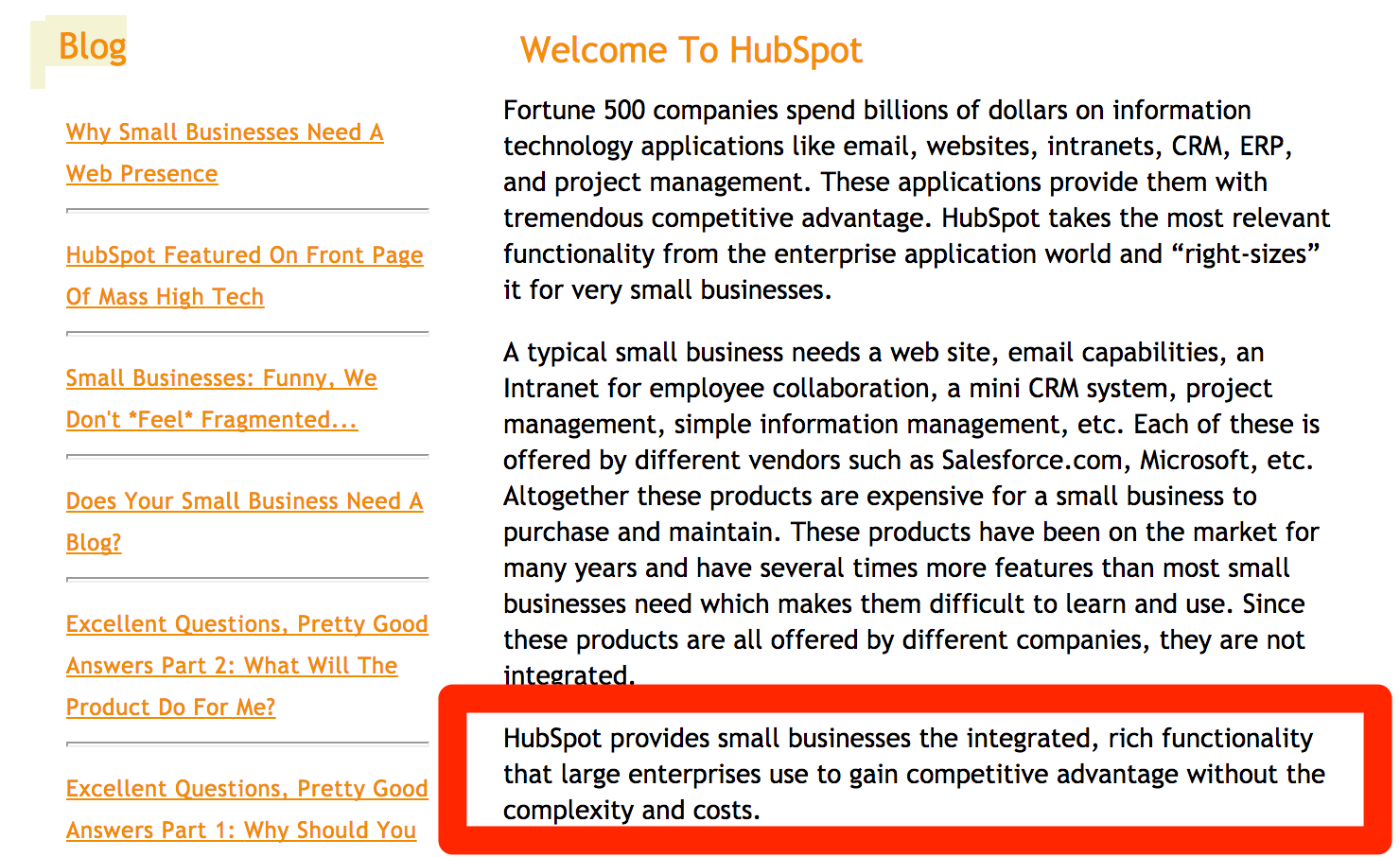 Source
Source
In 2014, HubSpot created a new product called Sidekick for inbound sales. They were still positioning themselves as a solution for small businesses who were looking for an alternative to enterprise solutions. But they designed the product to be a little more lightweight than the inbound marketing tool. With fewer features, the product was for teams who didn’t need as much functionality.
Sidekick was priced at $10/month to reflect this lighter functionality. At this price, the product was attracting customers in the $100 ARPU range. But this version of Sidekick wasn’t a comprehensive solution like the first product had been. That marketing product had more function and was priced higher to attract customers in the $10K ARPU range.
The value that these core customers saw in HubSpot ultimately guided the company’s decision to make changes to Sidekick. They added more functionality and raised the price to $50/month. Instead of building a bare-bones tool that could be sold at a lower price, they turned Sidekick into a tool that could be used for all SMB sales needs. They also included a freemium tier and free CRM that allowed very small businesses to use their tools, too.
HubSpot drew a line in the sand and developed their new product by building around these principles:
- They consciously made the decision to build a product that their original users wanted to use. They could have decided not to do this, but then they would have had to align the product with a new audience. Since they chose to build for their original audience, they focused on the value that those first customers loved—having a single place for all of their marketing and sales needs.
- They built a new way for core customers to engage with HubSpot. By adjusting Sidekick so that it was targeted to the types of users that already used the marketing product, the company further integrated its products into these users’ workflows in new ways.
- They didn’t rely solely on customer feedback. Good product development comes from many places, including studying the market. Customers may not tell you directly that they want something, but this doesn’t mean it won’t be helpful to them.
HubSpot made a choice to continue building for their existing customer base instead of building for a new audience. Returning to the value that these original customers loved in the marketing product helped Hubspot build a successful new sales product for these customers.
Augment SMB-backed value with enterprise accommodations
Sometimes it makes sense for a company to add a new target audience. But to gain new customers without losing old ones, the company needs to keep delivering on its original promises.
Targeting a new type of customer—whether of a different company size, different ARPU, or different industry—can be a huge growth lever. You have the potential to gain new sources of revenue and a new pool of loyal customers. Companies will often evolve by moving upmarket. They’ll start out by catering to SMBs, and eventually move to the enterprise.
But don’t trade these new enterprise customers for old SMB customers. Continuing to work on SMB solutions keeps you innovating. And when you neglect the SMB market, you open yourself up to disruption from smaller competitors.
If you alter your product to attract bigger customers, don’t forget why your original, smaller customers loved you.
Zendesk scales up a small business CRM for enterprise
It’s possible to deliver the value your SMB customers love to enterprise users. This keeps your overall brand cohesive, but allows you to iterate on your product’s value. It ensures that you don’t alienate your original, smaller customers in the pursuit of new ones.
Zendesk made this shift. The company began in 2007 as a CRM with a value proposition for small businesses: “A better way for small businesses to keep track of customer communication.”
Their first product was a simple help desk that allowed small companies to manage support tickets.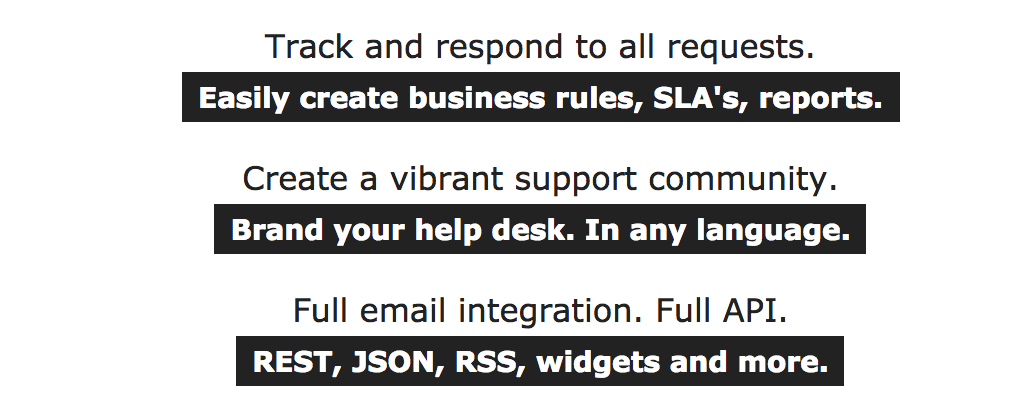
From an early version of the company website.
In 2011, Zendesk began targeting a new audience: enterprise companies. In a blog post about their new plan, they explained that the enterprise product would continue to be a highly personal and collaborative solution that their SMB customers loved. The enterprise features allowed them to deliver these things in a format that bigger companies needed: The additional features, like unlimited internal usage, a high level of customization, and extra layers of security, didn’t fundamentally change the original value proposition of easier and better customer contact. It just made it more of a viable, comprehensive option for enterprise companies as well. Since prices continue to start at $5 per agent/month, Zendesk is still able to provide value through to the small businesses that have used them from the beginning.
The additional features, like unlimited internal usage, a high level of customization, and extra layers of security, didn’t fundamentally change the original value proposition of easier and better customer contact. It just made it more of a viable, comprehensive option for enterprise companies as well. Since prices continue to start at $5 per agent/month, Zendesk is still able to provide value through to the small businesses that have used them from the beginning.
Zendesk was able to add a new enterprise customer segment without losing sight of what SMB customers love by building around these ideas:
- Zendesk expanded to enterprise while maintaining its principles, like collaboration and personalization, that drew in smaller customers. There are many other enterprise CRM incumbents, such as Salesforce, that Zendesk competes with. Zendesk has maintained a competitive advantage by focusing on what they know people already appreciate.
- They continued to cater to their initial customer segment. By keeping plans at lower price points in addition to adding more expensive plans with more functionality, Zendesk didn’t have to sacrifice the market that helped it grow from the very beginning.
- They made deliberate product changes that catered to a new enterprise customer segment without infringing on original products functions. Things like increased security and customization didn’t make the CRM products work differently—they just made the solution more of an appealing option for enterprise companies than it was before.
Zendesk added the enterprise customer segment in addition to their SMB segment thoughtfully and carefully. They made sure their enterprise changes didn’t cross over the line they’d drawn on maintaining customer value.
Evolve carefully
Evolution is necessary, but sacrificing old customers for the tomorrow’s leads isn’t a smart way to grow a business.
There will be reasons your early customers love your product that won’t change as you grow your business. Identify those by eliciting feedback early on, and make sure you align your product changes and feature additions to those core values.
It’s hard to know exactly which changes are the right ones every single time. By drawing your line in the sand, you create the first boundary you need to make good decisions.
